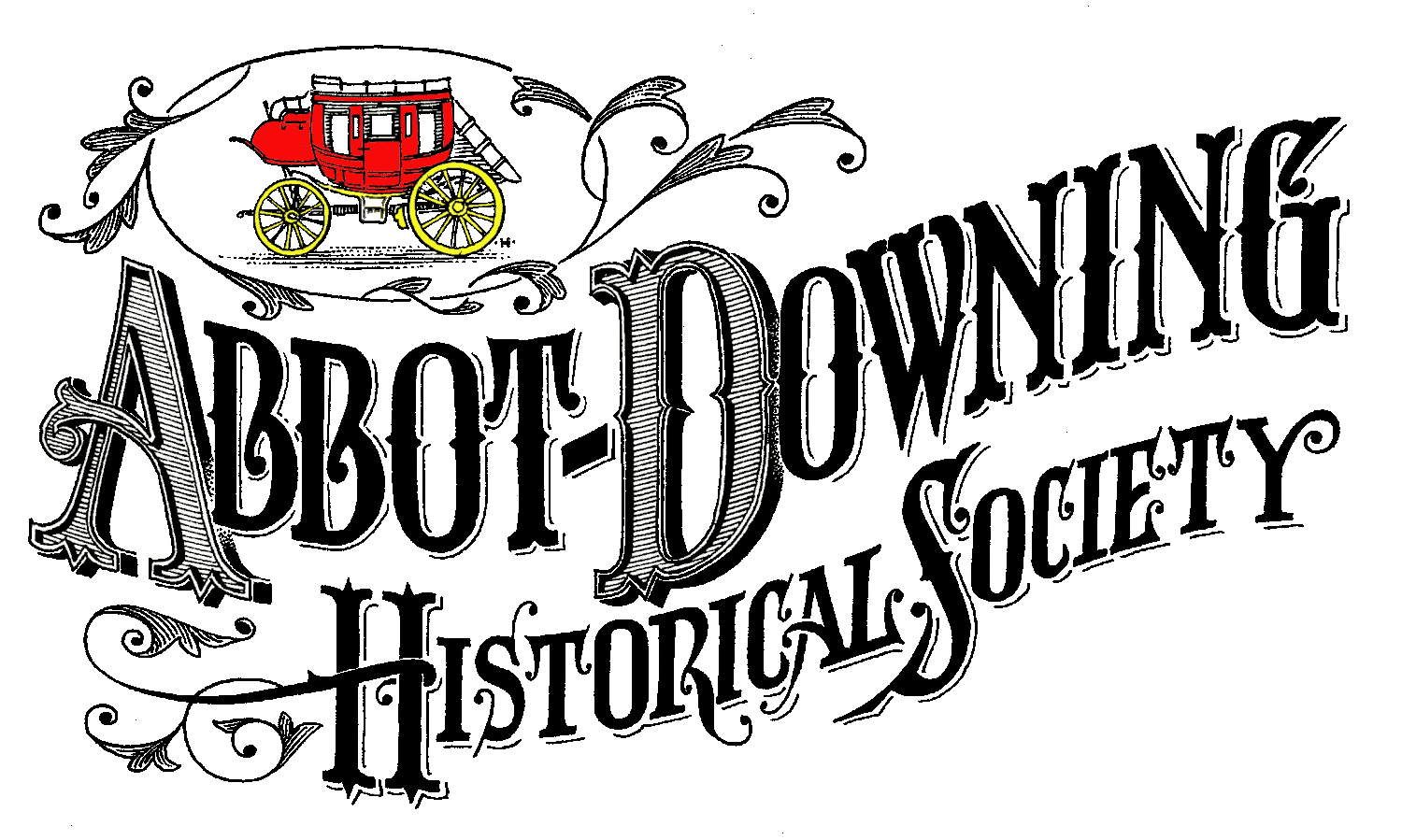The Origin of the Abbot-Downing Company
The Abbot-Downing Company was founded in Concord, N.H. by Lewis Downing and J. (Joseph) Stephens Abbott in the 1820’s. Downing was a skilled wheelwright and, seeing that Concord, N.H. was becoming a transportation hub, decided to get into the manufacturing of stagecoaches. He recruited Abbot, who was trained in the area of coach body building, and together, their skills would create a thriving company that produced some of the finest and well-known vehicles of their time.
The Concord Coach
Lewis Downing and J. Stephens Abbot brought together the best features of many of the coaches, carriages, and wagons of the time to come up with the design of the Concord Coach. The leather thoroughbrace suspension and the egg-shaped body gave it its strength and unique ride. The flat top provided space for baggage and passengers. The high driver’s seat provided good leverage for braking and vision of the road ahead. Remarkably, the design remained basically unchanged for the nearly seventy-five years that Abbot & Downing build stagecoaches.
Types of Coaches
While each vehicle was made to order, there were two basic configurations of coaches, Eastern and Western, and three sizes, six passenger, nine passenger, and twelve passenger (the number of passengers only refers to who would fit inside, not the many that might be riding on top). The Eastern coach could also be manufactured as a “Hotel Coach”, with seats on the top and back and glass French windows. The Western coach was created to deal with extreme road conditions on the western coach routes. It had wider and heavier wheels and longer and wider thoroughbraces, and the glass windows in the doors were replaced with roll down curtains and two small side light windows added beside the doors. The frame was also strengthened and the axle mounted above the reaches.
Other Vehicles
While the Concord Coach is the product the Abbot-Downing Company tends to be known for, they did produce other vehicles. Other types of wagons fit for a variety of uses were products of their shops. They were even commissioned by the Mount Washington Auto Road to create a tourist wagon that brought visitors to the summit of the mountain. Multiple teams of horses would use used on the route and an entire strip of leather would be burned through on the brakes during the decent.
The Final Days
After several reorganizations, in 1916 the Company ventured into motor truck production. Like many of the smaller truck builders, the Abbot & Downing Truck and Body Company built what is known as “assembled” vehicles. They manufactured only a very limited number of the parts and relied on other firms to produce them which they assembled into the trucks. All production ceased around 1928 and the business was closed down. Over the next few years, the assets were sold off. A fire in the 1950’s destroyed many of the historic buildings that had housed the workshops with only the woodworking and blacksmith shop buildings remaining.

